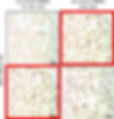Image Integrity Risks in Life Science Publications
- Dekel Faruhi
- Nov 28, 2024
- 3 min read

In the realm of life science research, images play a pivotal role in communicating complex data. However, the integrity of these images can sometimes be compromised, leading to significant issues. This post will delve into the various types of image integrity risks, including Image Duplication/Reuse, Image Manipulation, Image Fabrication, Image Plagiarism, Inappropriate Image Handling, and Image Misinterpretation.
Image duplication or reuse is a common issue where the same image or part of the same image is used in multiple contexts, leading to misrepresentation of data. This is usually a result of unintentional error. However, this issue not only misleads the readers but also undermines the credibility of the research. Authors should ensure unique images for each data set and cross-verify them before publication.

Image manipulation involves altering an image to misrepresent the original data, which can be as simple as over-adjusting the brightness or contrast to highlight certain aspects or as complex as digitally adding or removing elements. For example, in a cell biology study, manipulating an image to show more cells reacting to a treatment than there actually were can lead to false conclusions. Researchers should always retain and refer to the original, unaltered image and use software adjustments sparingly and transparently.
Image fabrication is the creation of a completely non-existent image or data. This is a severe form of misconduct, as it involves creating false evidence. For example, creating an image of a non-existent protein band in a gel electrophoresis result is a case of fabrication. To avoid such issues, researchers should strictly adhere to ethical guidelines and ensure that all published data is authentic and verifiable.
Image plagiarism involves using someone else’s image(s) without permission or proper citation. Doing so is not only unethical but also infringes copyright laws. For instance, using a histopathology image from another researcher's paper without proper attribution is considered plagiarism. Researchers should always credit original sources and seek necessary permissions for image use.
AI-generated images are a growing concern in the realm of scientific research, as these artificially created visuals can be used to fabricate data or misrepresent findings. Created using advanced generative models, these images can mimic genuine scientific visuals with such precision that distinguishing them from authentic images becomes challenging. For instance, a synthetic microscopy image resembling a real sample could introduce false evidence into a study, misleading readers and reviewers. The increasing accessibility of AI image-generation tools heightens this risk, making it imperative for researchers to ensure that all visual data presented in their work is both genuine and verifiable. Employing robust detection tools, such as Proofig’s AI AI-Generated Image Detection feature, is essential to safeguard the integrity and authenticity of scientific publications.
Inappropriate Image Handling
Inappropriate image handling can encompass a variety of issues, ranging from poor image quality to the incorrect labeling or naming of images. For instance, erroneously saving images with the wrong names could inadvertently lead to the misinterpretation of experimental results. Such mistakes not only compromise the integrity and credibility of the data but can also lead to erroneous conclusions that may have broader implications. Consequently, it's imperative that researchers use high-quality images and precise annotations to uphold the trustworthiness and validity of their work.
Image Misinterpretation
Image misinterpretation occurs when an image is inaccurately interpreted or when conclusions are based on mistaken perceptions. For example, in cell biology, misinterpreting the intensity or localization of specific staining in confocal microscopy images might suggest the presence or overexpression of a protein in a cellular compartment where it might not actually be prevalent. Such errors can profoundly alter our understanding of cellular processes. To avoid such pitfalls, researchers should not only conduct their experiments multiple times, with a minimum of three replicates, to ensure consistent and accurate results, but they should also actively seek feedback and consultations from experts and peers in their field. This collaborative approach can serve as an additional safeguard to ensure that interpretations align with best practices and current scientific understanding.
Tip:
Always retain original and representative, unaltered images. Ensure the meticulous organization and proper archiving of data. When in doubt, seek a second opinion from an expert.
Related Posts:
Tags:
Image Risks, Life Science, Publication Ethics, Image Integrity
